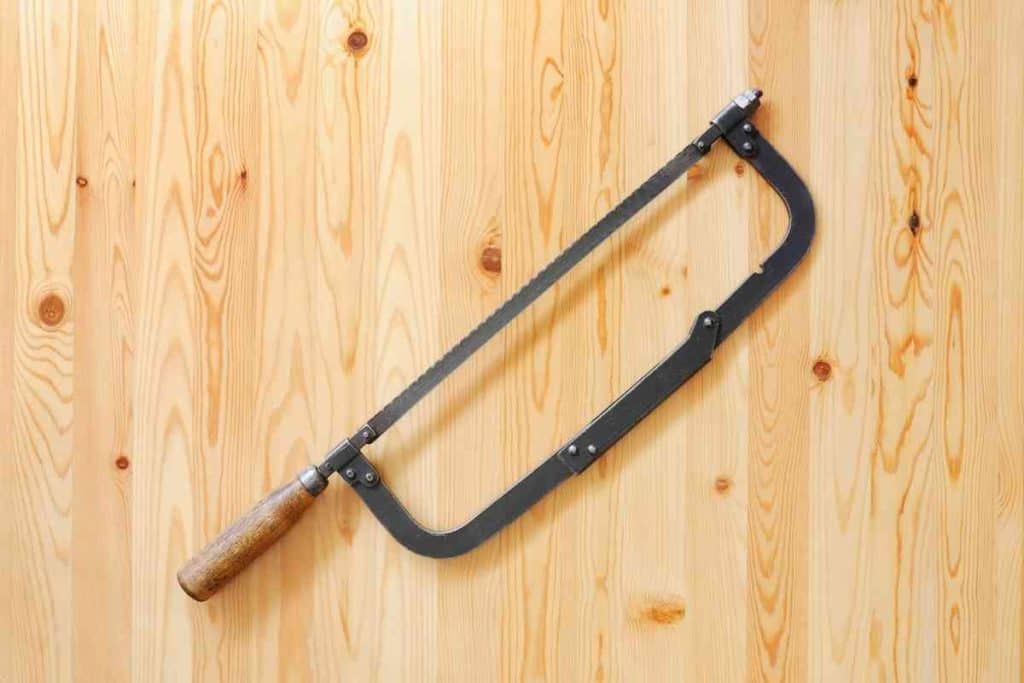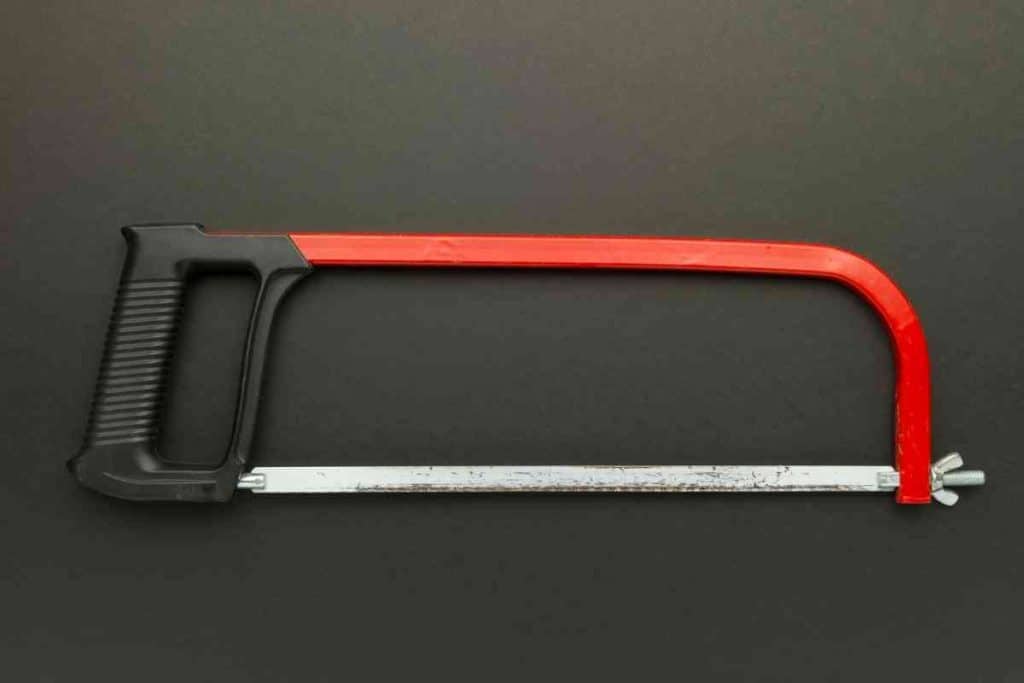We independently research and recommend the best products here. This article contains affiliate links. If you make a purchase after clicking on a link, we may earn a little commission at no extra cost to you.
If you held both a hacksaw and a handsaw, I bet you will immediately notice some differences! But how can you tell the difference between handsaw vs hacksaw?
Hacksaws and handsaws differ in terms of design, shape, size, handle, and usage. Hacksaws are mainly ideal for cutting steel and plastic materials, while handsaws are suitable for cutting wood materials and trees.
If you love hands-on experience a lot, the chances are that you'd soon have reasons to need a saw. And when you do, choosing the right saw for the task is the first step to getting started.
Maybe you'd end up working with woods, steel, or plastic materials. Having the proper saw in your arsenal relieves the stress 10X over.
So, let's explore these saws.
Hacksaw Vs Handsaw: The Simple Truth!

Hacksaws and Hand saws share many similarities, and they are so often confused as the same thing. Oftentimes people use these saws interchangeably just as much as they confuse them for each other.
Both the hacksaw and handsaws can be used for cutting different materials like metals, wood, and plastics according to the most pressing need at hand. They are both versatile, with their cutting blades easy to replace when worn out.
Related Articles: Bow Saw Vs Hand Saw
Let's face it: it's challenging to have a drawn-out difference between hacksaw vs handsaw unless we consider their intended purpose of use.
Both saws have very distinct shapes and sizes that make them better suitable for certain tasks.
Like I mentioned earlier, hacksaws are for cutting materials like plastic and steel, while hand saws are for cutting wood materials and trees. But either can still do a little bit of everything with more effort.
Both the hand saws and hacksaws use a replaceable blade. While the hacksaw blades have many varieties, densities and are readily available, the handsaw blades, on the other hand, are not as easily available.
You can forcibly use these saws for their unintended purposes, which will force the blade to wear out so easily. But that isn't the way to go. Let's help you understand the unique differences between hacksaw and handsaw.
Shall we?
Differences Between Handsaws and Hacksaws

We can find many reasons to differentiate between the handsaw and the hacksaw. The shapes, the sizes, the handles, and so on. But only the purpose of these saws draws the line.
This is an all-inclusive comparison between both of these saws. As such, we'd consider similarities and differences both of these saws have. Right now, let's take a look at the difference between these saws.
Related Article: Husqvarna 350 Chainsaw Review
| Handsaws | Hacksaws | |
| Large blades | Blades are usually thinner and longer. | |
| It uses just a sizable handle with distinct shapes that are not bow-like. | These saws have a bow-shaped metallic frame. | |
| Mainly used for cutting woods | Majorly used for cutting pipes and metals. | |
| Does not have an adjustable frame. Which are usually wooden or plastic. | Has a metal frame that can sometimes be adjusted to fit different blade lengths. | |
| It takes a lot more effort to replace the saw blade. | Blades are removable and can be easily replaced. | |
| This blade is arguably lighter and dense | Hacksaws are heavier, although they appear thinner, and that's due to their round metal bodies. |
In addition, hacksaws have a density that ranges from 14-33 teeth per inch depending on the hand-selected blade you've got.
With distinct blades, either of these saws is better adapted for different specialized tasks.
The hacksaw blades are available in top-notch quality of 300mm and 250mm. And they are also equipped with high-speed steel that is brewed with high carbon steel blades. These blades have supreme qualities that give them the warranty to last longer.
About their availability, the handsaw blades are not as easy to find as the hacksaw blades because they are at almost every tool shop.
However, handsaw blades have an advantage, and that's the fact that they can be sharpened when they wear out instead of having to constantly change them as you'd typically do with hacksaws.
There is one more way to see these saws differently, and that is how they work! While the hacksaw relies on the density and strength of its TPI when they cut, the hand saw depends on two factors: its TPI and its blade tooth angles.
Related Article: Bow Saw vs Pruning Saw
These blade tooth angles usually come in two forms — the 60° form for cutting hardwoods and the 90° form for cutting softwood.
Hand saw blades have two central blade angles. 60 degrees angle blades are for cutting hardwoods, while the 45 degrees blades are meant for softwoods.
Hack saws generally have a higher TPI ratio when placed side-by-side hand saws.
Similarities Between Hacksaws and Handsaws
We've talked too much about how hacksaw differ from handsaw. Let's bring it back home to what these saws share in common. As much as it seems like these saws are far apart, they have many notable similarities.
Let's explore them:
- Both the hand saw and hack saws are handheld tools
- Quite obviously, they are both saws and not kitchen knives
- They are operated manually without the need for electrical firepower. Just your arm strength and sharp blade teeth are everything you need for rock and roll
- They have very similar safety precaution steps
- Both of these saws are specialized for certain tasks and materials
Both saws have different TPI's, shapes, and blade forms, but they are arguably similar, and to someone who's never heard the term hack saw, they are both hand saws.
Now you know why choosing a hacksaw for cutting steel sheets is the best option and why buying a handsaw is the only choice when the wood is all that needs cutting.
So, place that buy order already!
Related Article: Pole Saw Vs Hedge Trimmer




